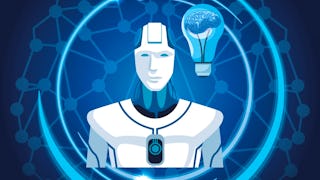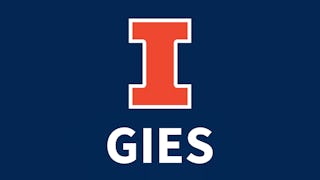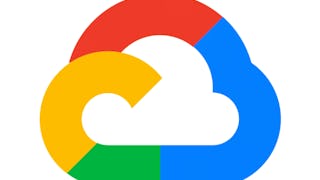This course explores the transformative potential of artificial intelligence (AI) and blockchain, specifically focusing on how they intersect in the Web3 era. We'll begin by examining the evolution of the Internet—from the early days of Web1 to the emergence of Web3. You'll look at the layers of the Web3-AI stack, and some of the unique opportunities and challenges that AI faces in the Web3 era. In Module 2, we'll explore how blockchain can make Generative AI more transparent, secure, and reliable, and how Generative AI can enhance what blockchains do—from automating smart contracts to optimizing networks and creating personalized experiences. In Module 3, we'll look beyond Generative AI and explore other areas where AI and blockchain intersect, including Agentic AI, decentralized governance, and AI-driven tokenomics. Finally, in Module 4, we’ll examine some real-world use cases in healthcare, arts and media, global commerce, energy, and sustainability. You’ll see how blockchain and AI work together to improve security, transparency, and adaptability across industries, delivering benefits to both businesses and users alike.

Enjoy unlimited growth with a year of Coursera Plus for $199 (regularly $399). Save now.

(26 reviews)
Skills you'll gain
Details to know

Add to your LinkedIn profile
18 assignments
See how employees at top companies are mastering in-demand skills

There are 4 modules in this course
In Module 1, you will be introduced to the concept of Web3, the next era of the internet, and how it builds upon previous eras of the Web. You'll learn how Web3 aims to cultivate a more open, transparent, and decentralized online experience, leveraging blockchain to empower users with control over their digital assets, data, and identities. You will also learn about decentralization across three primary levels: value, infrastructure, and organizations. We'll discuss how decentralization returns power and control to users, enabling them to own and manage their data and assets, actively participate in governance processes, and benefit from more resilient and accessible online services. We will then focus on the intersection of blockchain and AI, examining the six layers of the Web3-AI ecosystem: decentralized infrastructure, data fabric, foundation models, domain-specific models, smart contracts, and applications. Finally, we will look at both the opportunities and challenges that arise when AI and blockchain intersect in a Web3 world.
What's included
7 videos3 readings5 assignments1 discussion prompt
In this module, you will learn how blockchain and generative AI can work together to improve each other and create innovative solutions across various industries. We will first examine how blockchain can enhance generative AI by providing a secure and transparent infrastructure for data integrity and provenance, enabling trusted federated learning, and improving AI decision-making. Then, you will explore how generative AI can, in turn, enhance blockchain technology by automating smart contract creation, personalizing decentralized applications while respecting user privacy, generating unique digital assets like NFTs, optimizing blockchain networks, and simplifying blockchain interactions for users. Finally, we will consider real-world examples of this synergy in sectors like arts and media, real estate, gaming, risk assessment, and supply chain management.
What's included
5 videos3 readings4 assignments
In this module, you will expand your knowledge of AI beyond generative AI to explore how the broader AI landscape intersects with blockchain in a Web3 world. We will first consider "Agentic AI," which describes AI systems designed to autonomously pursue complex goals and workflows with limited direct human supervision. You will learn how blockchain can enhance the security and trustworthiness of these AI agents. Next, we will examine how AI can be used to facilitate and improve operations and decision-making in Decentralized Autonomous Organizations (DAOs), and the importance of balancing AI capabilities with human input in decentralized governance. We will also discuss some of the ethical considerations and challenges associated with AI and blockchain. Finally, you will learn how AI can be used to transform blockchain economics through AI-driven tokenomics and incentive structures.
What's included
5 videos3 readings4 assignments
In this module, you will explore how the intersection of AI and blockchain can be used to transform various industries. In healthcare, you will learn how AI and blockchain can personalize medicine, streamline clinical trials, and improve drug development and healthcare operations. In arts and media, you will discover how blockchain can be used to verify the authenticity of digital content, ensure fair compensation for creators, and create new interactive experiences. Next, we will examine global commerce and explore how AI and blockchain can streamline cross-border payments, customs clearance, and logistics, as well as enhance ESG tracking and transparency. Finally, we will look at the energy and sustainability sector, where you will learn how AI and blockchain are being used to create decentralized energy markets, optimize grid resilience, and encourage energy efficiency.
What's included
7 videos4 readings5 assignments
Offered by
Explore more from Leadership and Management
 Status: Preview
Status: PreviewJohns Hopkins University
 Status: Preview
Status: PreviewUniversity of Illinois Urbana-Champaign
 Status: Free
Status: Free Status: Free Trial
Status: Free Trial
Why people choose Coursera for their career




Learner reviews
26 reviews
- 5 stars
80.76%
- 4 stars
15.38%
- 3 stars
3.84%
- 2 stars
0%
- 1 star
0%
Showing 3 of 26
Reviewed on Jul 6, 2025
An interesting and very worthwhile course to obtain a good understanding of Generative AI and Blockchain

Open new doors with Coursera Plus
Unlimited access to 10,000+ world-class courses, hands-on projects, and job-ready certificate programs - all included in your subscription
Advance your career with an online degree
Earn a degree from world-class universities - 100% online
Join over 3,400 global companies that choose Coursera for Business
Upskill your employees to excel in the digital economy
Frequently asked questions
To access the course materials, assignments and to earn a Certificate, you will need to purchase the Certificate experience when you enroll in a course. You can try a Free Trial instead, or apply for Financial Aid. The course may offer 'Full Course, No Certificate' instead. This option lets you see all course materials, submit required assessments, and get a final grade. This also means that you will not be able to purchase a Certificate experience.
When you purchase a Certificate you get access to all course materials, including graded assignments. Upon completing the course, your electronic Certificate will be added to your Accomplishments page - from there, you can print your Certificate or add it to your LinkedIn profile.
Yes. In select learning programs, you can apply for financial aid or a scholarship if you can’t afford the enrollment fee. If fin aid or scholarship is available for your learning program selection, you’ll find a link to apply on the description page.
More questions
Financial aid available,





